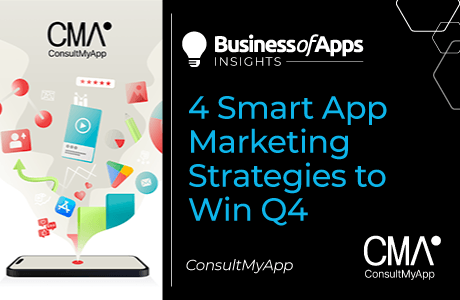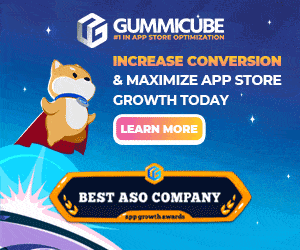Until now, the marketing funnel has been a useful construct to help companies focus campaigns and deliver experiences that support consumers at every step of the journey, from consideration to conversion. But the origins of the marketing funnel also date back to 1924, and a lot can change in a century. The ubiquitous marketing funnel, popularly referred to as the “cockroach of marketing concepts” because it continues to survive and adapt to any environment it finds itself in, is becoming increasingly irrelevant in a world where marketers must view every interaction as an opportunity to grow relationships and revenues.
Focusing on a marketing funnel effectively blinds them to the multi-dimensional nature of how people interact with their digital presence online and in-app and the multitude of opportunities to activate and motivate users.
We live in a world where people can enter your app at any stage, and they can decide the outcome. They can also move from awareness to action instantaneously and jump stages altogether to get to their goal. In short, there are nearly as many paths as there are individuals. It’s a dynamic that can overwhelm companies. More importantly, it completely obliterates the linear path from consideration to conversion.
Recalibrating marketing to go with the Flow
The marketing funnel works in one direction, built on the flawed logic that adding more to the top will grow wins at the bottom. It’s the mindset that has resulted in what research firm McKinsey aptly calls the “acquisition trap.” It’s triggered when marketers put too much effort toward designing short-term UA campaigns and too little investment in architecting comprehensive strategies to win customers’ lasting loyalty.
The outcome is a model that eats its tail and budget—and its days are numbered.
Privacy changes put pressure on marketers to retire the funnel and accelerate the shift from spending on user acquisition to driving user actions that move the needle on engagement metrics.
It’s a giant step in the right direction. Unfortunately, this alone won’t be enough. Marketers must also reject the notion that marketing is somehow separate from product. It’s outdated thinking that perpetuates silos and prevents teams from collaborating on efforts to drive sustainable and profitable growth.
The way forward is an approach that fuses product and marketing, allowing teams to make meaningful (and measurable) improvements informed by product analytics and the user flows they uncover.
Flows are paths and actions users take (and avoid) as they move through your app. As such, they speak volumes about user behavior and provide valuable insights into user intent.
Context-aware tech: The secret to 81% more conversions
Learn how leading apps are using context-aware technology to deliver perfectly-timed offers, reduce churn & transform passive users into loyal fans.
Learn moreTeams can harness flows in their strategy to:
- Distill user behavior data around how users navigate the app and identify ways to optimize the user experience.
- Experiment and A/B test various features, designs, etc. and measure the impact on user engagement and conversion rates.
- Group users based on their in-app behavior and analyze their performance over time to better identify trends, patterns and ways to target specific user segments.
Product analytics is the process of collecting, analyzing and interpreting data about how users interact with your app. But it isn’t a case of set-it-and-forget-it.
Teams should also regularly review the data to identify bottlenecks and be ready to implement changes at all stages to optimize user experience. But don’t settle for finding solutions to existing problems. Smart teams harness product analytics to do much more and experiment with new ideas to increase audiences and revenue based on data-driven feedback loops.
Mind the “in-between” steps
Product analytics is crucial in driving iterative improvements that optimize user experiences and unlock profitable and sustainable growth. However, exceptional wins result when teams harness flows to influence user behavior.
It’s why I advise companies to focus on the in-between steps and actions that users take that are strong indicators of high intent. The opposite is also true. But whether you want to understand why users stay or leave your app, you need a single source of truth about what users do in your app in the first place.
This is where product analytics shines, which is why it is an essential technology component in our approach to building a Sustainable Growth Stack.
An effective setup joins data analytics platforms from companies, including Mixpanel and Amplitude, that provide data around what users do in-app, with attribution platforms that provide data about the “who” of your audience. Engagement solutions from companies including Braze and Bloomreach complete the stack, offering companies actionable insights around the content and context of communications highly likely to drive customer connection and conversion.
Take the example of one of our client’s at CMA. When they observed that users continued to bounce between the tutorial and the help pages, they were desperate to find a solution that would unstick users and encourage deeper engagement with the app.
Marketing, which still embraced the funnel, assumed the problem was linked to acquisition campaigns and channels. Some marketers blamed ad copy and creatives they claimed were attracting the wrong users to the app. They argued that tweaking both would change conversion rates for the better. Other marketers framed it as a CRM problem, asserting that sending more notifications and emails would nudge users to take action and increase conversion rates.
However, a deeper examination of product analytics showed both approaches would miss the mark and squander significant resources. The problem was the product itself. Fortunately, the same data that defined the user flow with granular precision also pinpointed the fix with the same accuracy.
Flows, not funnels
It’s not enough to know where your users come from, you need data from every stage to understand how, where and when they convert. Answering those key questions requires marketing and product teams to tear down the silos and rally around product analytics data, the single source of truth that shows how users move through your app.
But don’t just rely on this data to understand (even anticipate) what it takes to increase conversion rates. You can also rely on the data to understand and improve the activation rate (the percentage of your users who complete the desired onboarding steps to become active and valuable users) and decrease churn by increasing value.
It’s all about starting with the user and their actions, including insights into what features they like, what obstacles they run into, and when they turn away—to create the compounding positive effect at the foundation of sustainable and profitable growth.












